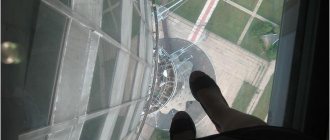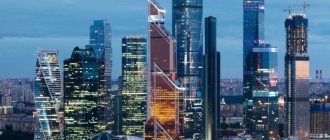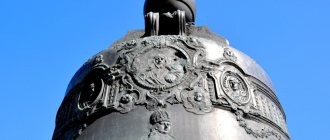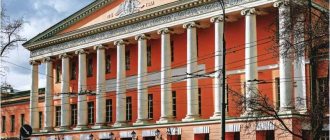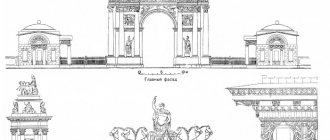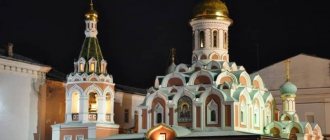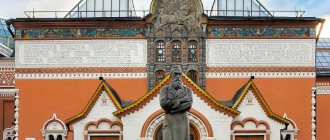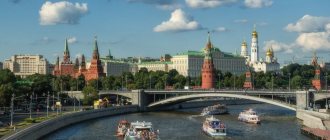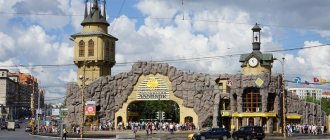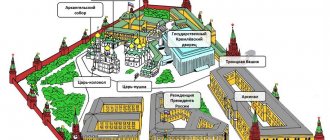Kutafya Tower is part of the Moscow Kremlin. Its name is associated with the outdated word “kutafya” - in ancient times this was the name for small, plump, clumsy and clumsy women. This is the only tower that is located outside the Kremlin walls. It is located opposite the Trinity Tower, and between them there is a bridge across the Neglinka. Today, the entrance to the Kremlin through the Kutafya Tower is open to everyone.
Story
The Kutafya Tower as an architectural structure appeared in 1516. The work was led by the Italian Aleviz Fryazin. In those days, when constructing walls and siege towers, the architects faced only fortification tasks - all entrances and entrances to the fortress were closed with special structures.
The Kutafya Tower of the Moscow Kremlin is the only such building that has survived to this day. It was built to protect the entrance to the Trinity Bridge. Additionally, a ditch was dug in front of the tower, into which water was then poured.
On the other side flowed the Neglinnaya River. The tower was not distinguished by its exquisite architecture. It was a simple low structure with two battle tiers and hinged loopholes.
Kutafya Tower of the Moscow Kremlin
The Kutafya Tower is a diversion tower of the Moscow Kremlin, in fact the only surviving barbican of the fortress. Through the gates of the Kutafya Tower there is a passage to the Trinity Bridge, which leads to the Trinity Tower and the Kremlin gates.
The tower was built in 1516 under the leadership of the Italian architect Aleviz Fryazin (Old) to protect the Trinity Bridge over the Neglinka, which was the only approach to the Trinity Tower and gates. Over the years of its existence, the Kutafya Tower was rebuilt more than once, and today it has an original and elegant appearance: a rectangular whitewashed base is topped with an openwork arched red parapet with white stone details.
The height of the tower is only 13.5 meters - with such compactness, we can say that compared to other Kremlin towers, which have a more stern and sedate appearance, it looks like a festive cake or cake.
History of Kutafya Tower
The Kutafya Tower was built in 1516 according to the design of the Italian architect Aleviz Fryazin (the Old) as a defensive archery tower (barbican) in front of the Trinity Bridge.
Initially, the tower was completely surrounded by water: the Neglinnaya River flowed behind it, dammed by the blocked spans of the Trinity Bridge, and an artificial ditch was dug in front. Through the moat, one could get into the tower via an inclined drawbridge, which was located 6 meters above the ground and, in case of danger, rose, tightly closing the entrance to the fortress. In case of a siege, the Kutafya tower was equipped with plantar loopholes for shelling at ground level and machikuli - hinged loopholes for vertical shelling of the enemy storming the walls.
In its original incarnation, the Kutafya Tower, like other Kremlin towers, was crowned with dovetail battlements and a hipped roof: an openwork parapet similar to the modern one was erected only in 1685. It is curious that in the past the height of the tower was 18 meters: in addition to reconstruction, which also affected the height of the building, part of the tower was simply filled up over the years of its existence.
origin of name
The name of the Kutafya Tower today remains one of the small but intriguing mysteries of the Moscow Kremlin.
According to the most common version and accepted by the townspeople, the name of the tower comes from the word “kutafya”, which meant a plump, clumsy, unkemptly dressed woman. Looking at a modern tower with an openwork finish, it is difficult to associate it with such an impartial image, however, it is likely that the appearance of the tower before the restructuring was more consistent with the stated meaning. The second version connects the name “Kutafya” with the word “kut”, i.e. literally a shelter, a corner. Despite the obvious logic, the version is questioned: the derivative name from the word “kut” could be “Kutovaya”, and it is not entirely clear where “Kutafya” could come from.
In addition, there are different opinions on the issue of declension of the name of the tower: formally speaking, “Kutafya” is a feminine noun (“near the Kutafya Tower”), however, in colloquial speech it is often used as an adjective (“near the Kutafya Tower”).
Among other things, the modern Kutafya Tower can rightfully be considered the most hospitable tower of the Kremlin: the fact is that it has a checkpoint through which Muscovites and tourists can enter the territory of the fortress. To do this, as in the old days, you need to cross the Trinity Bridge.
The Kutafya Tower of the Moscow Kremlin faces Manezhnaya Street in the area of Vozdvizhenka Street. You can get to it on foot from the metro stations “Lenin Library” on the Sokolnicheskaya line and “Alexandrovsky Sad” on Filevskaya.
Tower functions
In the Middle Ages, defensive fortresses with huge towers with entrances and loopholes, and thick high walls appeared one after another in Moscow. The Kutafya Tower was a gate through which a passage opened to the Trinity Tower - the tallest in the Kremlin. A bridge connected both buildings.
On the other side, the Kutafya tower was equipped with a second bridge - a drawbridge. At any sign of impending danger, the bridge was raised, and the enemy could not approach Kutafya, since in front of it there was a deep ditch filled with water.
Kutafya Tower of the Kremlin on the map
If you look at a map of the Moscow Kremlin, you can see that the Kutafya Tower is located on the western side, and its central entrance is turned towards the Alexander Garden.
The nearest metro stations are Aleksandrovsky Sad and Biblioteka im. Lenin". It is difficult to pass by the tower and not notice it - it has such an impressive and powerful appearance. Many tourists constantly crowd around it. To enter the Kremlin territory, you must first purchase tickets, which are sold in the Alexander Garden, and then walk through the Kutafya Tower, Trinity Bridge and Trinity Tower to the Kremlin territory.
Reconstruction
Throughout the history of its existence, the Kutafya Tower of the Kremlin has been restored many times. In 1685, its roof and the two-horned battlements on which it was installed were completely dismantled.
Instead, an arcade superstructure appeared, which is still a decoration of the tower. When the threat of constant attacks disappeared, the ditch surrounding the fortress was filled up. You can see the gaps at the side gates - they were once used for chains that ensured the operation of the lifting mechanisms.
A gate was built in the wall located on the side of the capital and topped with a portal. At the beginning of the twentieth century, the roadway near the tower was raised by almost two meters, as a result of which the top and entrance gate had to be moved apart. During all this work, damage was caused to the gate icon depicting St. Vladimir.
History of construction
Construction of the turret began approximately in 1516; the Italian master Aleviz Fryazin acted as the architect of the building. The exact date of completion of construction is unknown; historians are still debating this topic. According to some sources, the building grew up along with the Moscow Kremlin at the beginning of the 15th century, according to others - at the beginning of the 16th century. However, the numbers here are not of great importance; what is important is that the landmark stands on Sapozhkovskaya Square to this day and is an excellent place to visit at your leisure.
Kutafya Tower today
Nowadays, the Kutafya Tower is not a formidable guardian, but rather a good-natured gatekeeper of the Kremlin. Many tourists enter the Kremlin territory through it. But not everyone is familiar with her heroic past.
But more than one generation of Moscow’s defenders fought with enemies in this tower. Thanks to them and the Kutafya Tower - modest and inconspicuous - today we can admire the beauty of the ancient capital and be proud of our ancestors.
In 2011, modern pavilions began to be built near the tower. Experts in the preservation of cultural heritage fear that they will have a negative impact on the historical appearance of the monument. In addition, such interference threatens to exclude the Moscow Kremlin from UNESCO’s protected lists.
Features of the architecture of the Kutafya Tower, the history of its name
The Kutafya Tower was not distinguished by any architectural delights - it was a simple, low structure with two combat tiers and hinged loopholes. The top of the structure was completed with two-horned battlements and a tent-shaped plank roof. However, in 1685, the external appearance of the tower underwent some changes - its upper part was turned into an openwork crown with white stone details, and many years later, already in the 18th century, the vault that covered it was dismantled.
In the 19th century, the Kutafya Tower was repeatedly reconstructed. So, in 1868, its gates were walled up, and instead of them there was a through passage from Moscow to the Trinity Bridge. With the beginning of the 20th century, changes also affected the side passages - they were opened in 1901, and re-laid in 1930. And today the Kutafya Tower does not have open side passages. You can find it next to the Trinity Tower.
View of the tower at night
Historians believe that it was the simple design of the tiny tower that became the reason for its name Kutafya
. For example, in Dahl’s dictionary the word “kutafya” is deciphered by the phrase “ridiculously dressed.” And in the colloquial speech of ordinary Russian people, the word “kutafya” was understood as a plump, clumsy woman.
But if you take the word “kutafya” apart, it is easy to notice that its root is “kut” (in other words, angle). Indeed, a small building of the Moscow Kremlin with the name Kutafya is located at the end of the Trinity Bridge, as if in a corner. However, at one time the tower had another name - it was the Bridge Tower, since both it itself and the bridge were built at the same time.
Tower inside
Today, historians see some threat to this valuable cultural monument of ancient Russia. The fact is that several years ago, in the neighborhood of the Kutafya Tower, the construction of modern pavilions began, which with their appearance can distort the historical appearance of the Moscow Kremlin ensemble. In addition, such intervention is fraught with the exclusion of the Kremlin from UNESCO’s protection lists.
Attraction rating
Rating 4.67 [3 vote(s)]
| ← KREMLIN TOWERS | MOSCOW KREMLIN → |
How to get there
The tower is located on the western side of the Kremlin, and its central entrance “looks” towards the Alexander Garden. Many people are interested in how to get from the metro to the Kutafya Tower of the Kremlin. Nearest stations – Biblioteka im. Lenin and Alexander Garden.
It is impossible to pass by this landmark of the Moscow Kremlin, because it has an impressive size and a solid appearance. In addition, there are always crowds of tourists near the tower. The address of the Kutafya Tower is st. Vozdvizhenka, 1/13.
Alexander Garden
The Kutafya Tower of the Kremlin is located in the Alexander Garden. Sitting down on one of the benches, you can take a short break and admire the majestic bulk of the walls and defensive structures of the western part of the Kremlin. Keep in mind that you will be able to grab a quick bite here as there are many small cafes and food trucks located here. Further, on Red Square and the Kremlin Embankment, you are unlikely to have such an opportunity.
During the reign of Ivan the Terrible, the Apothecary Garden was laid out on the right bank of the Neglinnaya, between the Borovitskaya and Trinity towers. But already at the beginning of the 19th century. At this site in the center of Moscow there were swamps and ravines that were turned into city dumps. In 1817-1823 to commemorate Russia's victory over Napoleon, a garden and park complex was created here - the Kremlin Garden (design by O. Bove), in 1856 renamed in honor of Emperor Alexander I.
Neglinnaya, which had become very shallow and had swampy banks, was taken into the pipe. The earthen bastions erected under Peter I were demolished, and in their place linden alleys and shrubs were planted, park sculptures were placed, and artificial ponds were dug. The vast territory of the new complex was divided into three parts: Upper, Middle and Lower gardens. The famous cast-iron gates of the main entrance and the fence with bronze decoration are made according to the drawings of the architect E. Pascal.
Interesting Facts
- Some historians believe that the name of one of the twenty towers of the Kremlin, Kutafya, comes from the word “kut”, which means corner or shelter.
- The Kutafya Tower is the lowest in the Kremlin and the widest - its height is only 13.5 meters (the height of the tallest tower in the Kremlin, Trinity, is more than 80 meters). The height of the structure was reduced by as much as 7 meters due to archaeological deposits.
- In the Middle Ages, the tower also had another name – Bridgehead.
( 41 ratings, average: 4.59 out of 5)
More interesting buildings
- Burj Khalifa in Dubai
- Fools Tower in Vienna
- Tower of Death in Perm
- Tower of London
